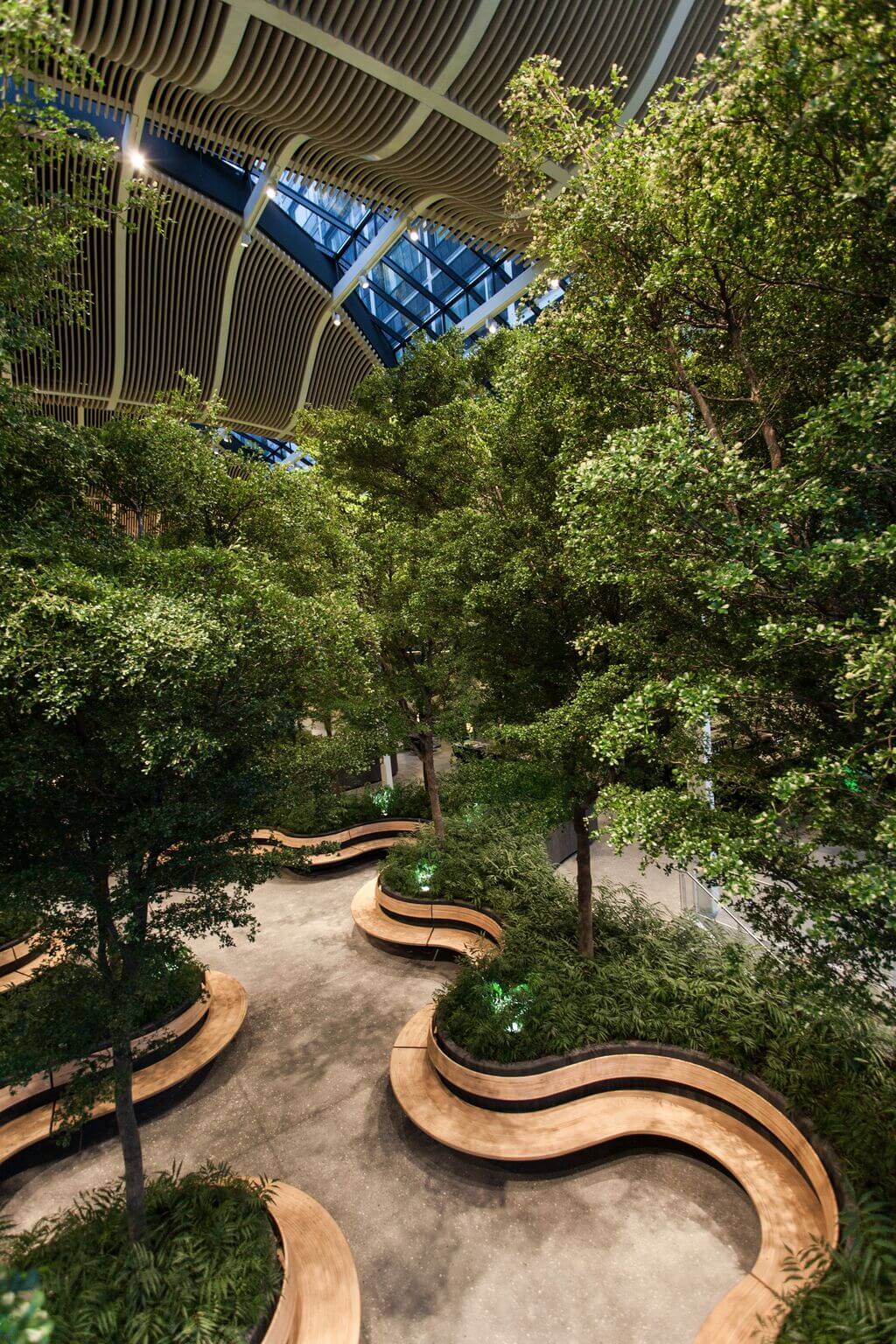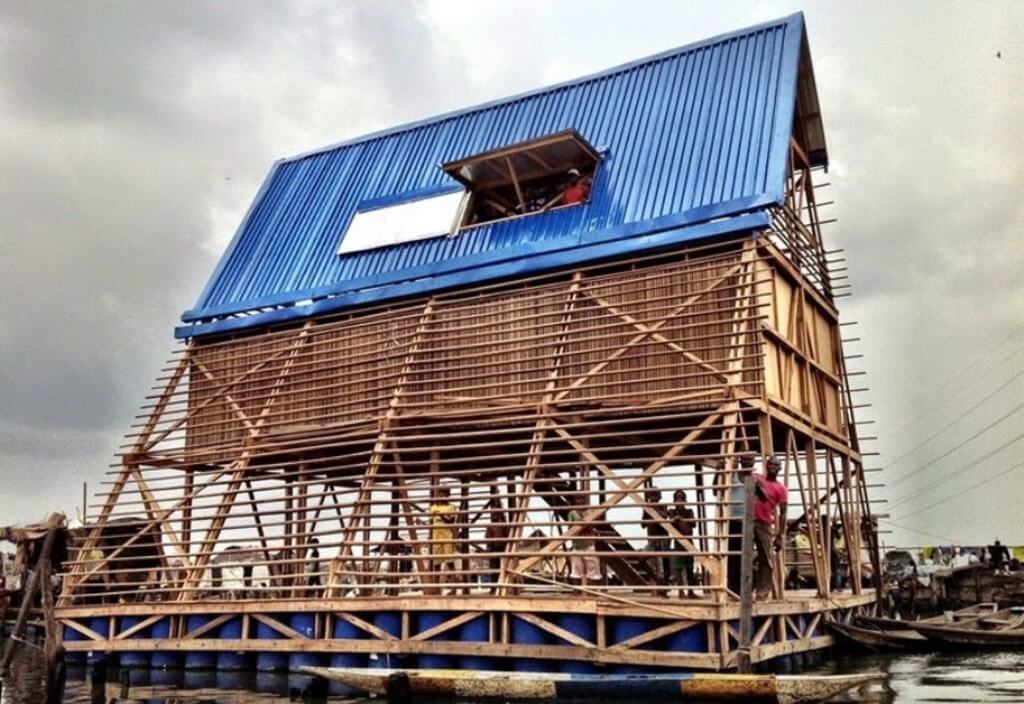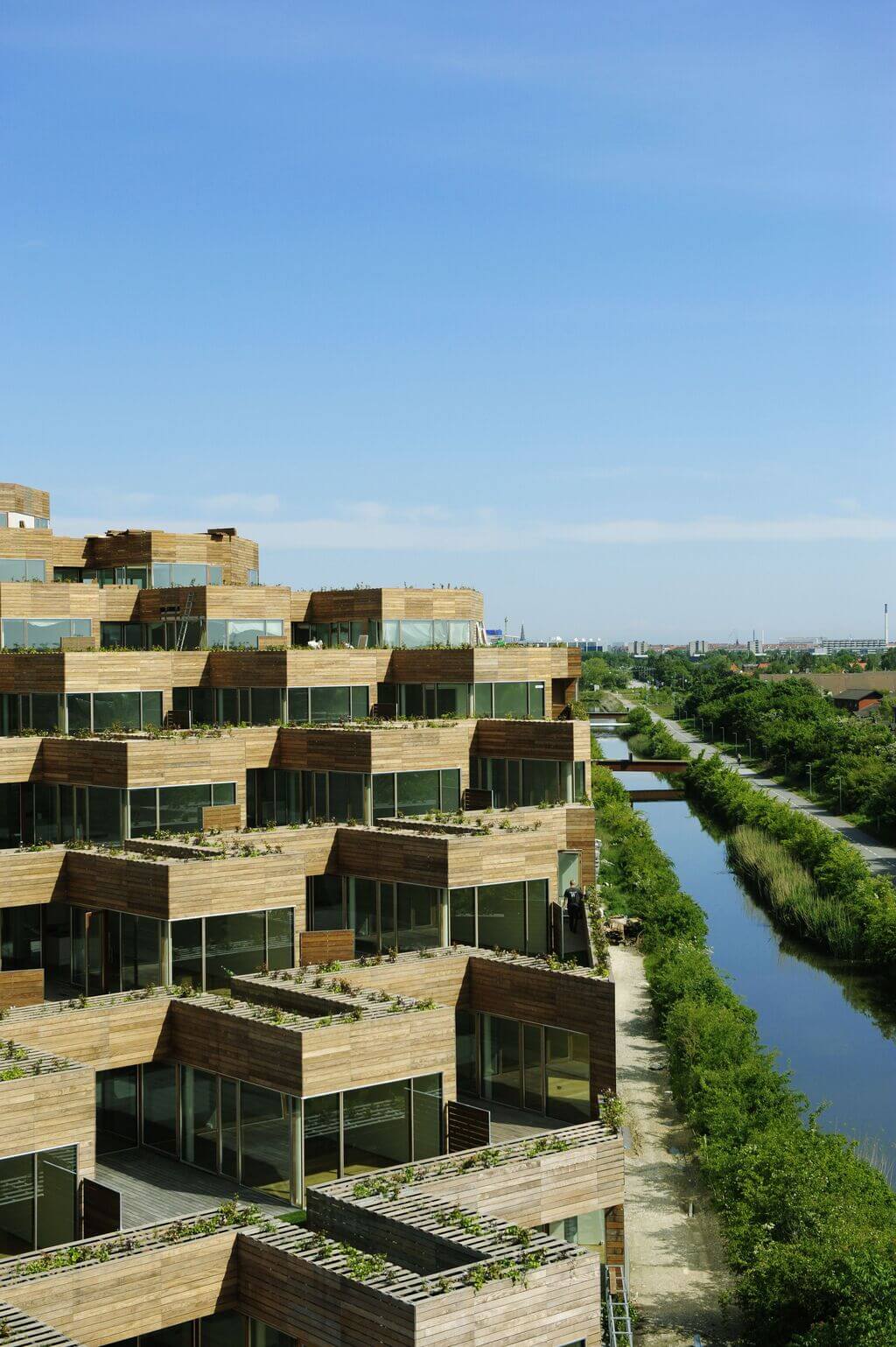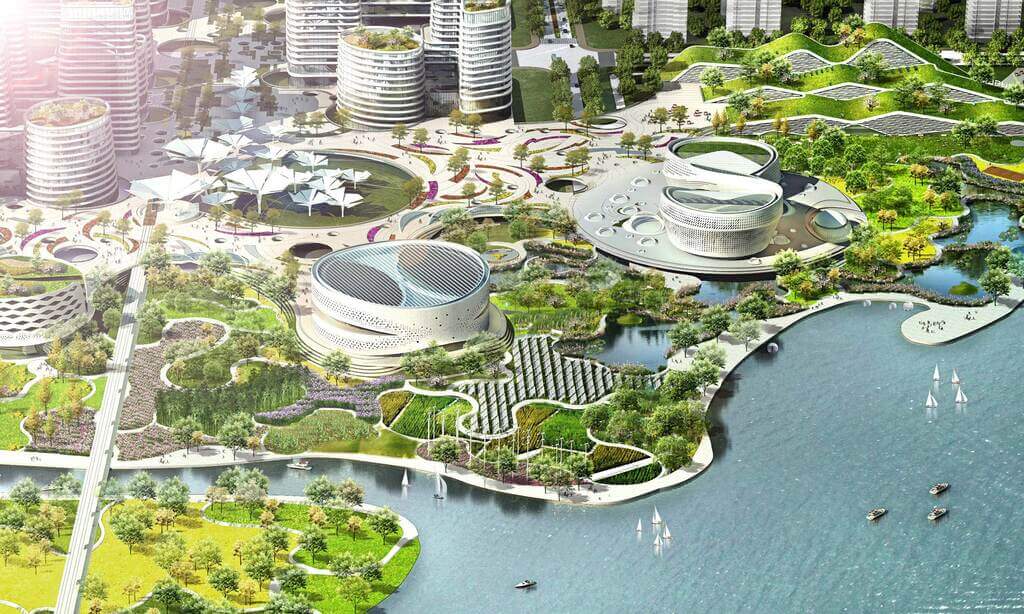Sustainability in the new age has been one of the greatest trends that have had a lasting impact within the coming years. It has turned from ‘scarcely seen’ to a ‘widely known’ concept within a decade. So what made this change happen?
Post the 1960s, the building industry started getting conscious of the environmental impacts of the built structures. As our buildings account for 39 percent of carbon emissions in the environment. This led to a global rethinking and thus, Green Architecture gained its much deserved and delayed attention. Recent reports have also shown that a LEED- Certified building can cut greenhouse emissions as well as water consumption by half along with the operational cost that is 25 percent less. As per reports, the buildings have also proven to be 30 percent more on occupant satisfaction with low-interest rates.
A global surge of architects, design thinkers, and innovators have taken ‘green’ in sustainable architecture to a newfound level. Sustainability in design has been a new way to aim for excellence in architecture. It can act as a lens for future generations to retain and regenerate from what already exists.
There is still a mass account of myths about Sustainable Architecture. Right from the general population to architects and innovators, this set of myths have been a common misconception that is holding sustainability’s progress up to a certain extent.
Here are some of the myths that are commonly seen in the construction industry that need to be debunked: –
1. “Green Buildings Are Just Common Sense”

Many people dismiss green buildings by quoting them to be a collaboration between landscaping or gardening. On the contrary, Green buildings are a culmination of a holistic approach towards looking at a design that leads to a successful and functional end product.
Right from the design ideation to the research and collaboration with different fields of design as well as engineering, Green Buildings have to be thorough.
2. Sustainability = Environmentalism

Environmentalism is often equalized with sustainability as we tend to perceive the latter as a phenomenon that will end up saving the environment.
Sustainability is defined as focusing on meeting the needs of the present without compromising the needs of future generations. Environmentalism is a part of sustainability that induces people to be conscious of their approaches towards the environment and well, sustainability.
3. Sustainable Architecture is Expensive

Unlike known beliefs, sustainability is inclusive of technological advancements like solar panels, water treatment systems, sewage treatment systems, etc., but it is also small methods that lead to a larger impact. Most of the criticism that it receives is due to the high technological cost of the equipment.
Although, another point to consider here is the lesser operational cost in the long run that accounts for bigger savings. Green buildings also cost less than conventional buildings.
“A lot of the high-profile green projects that get builders’ attention are very high-end, and that’s one reason this myth is still around. But the simple fact is that there are plenty of strategies for inexpensive green building, from right-sizing the structure to optimal value engineering to reducing waste, among many others,” says Alex Wilson, president of BuildingGreen Inc.
The base of sustainable design starts from the thought of ‘what exists and how can it be reinterpreted’. If we follow these principles, sustainability can in turn be the most affordable building construction technique that there is.
4. Sustainability isn’t About the Design

This is one of the common myths that sustainability is exclusive of any design inputs and consideration while being centric towards technological equipment like solar panels, water treatment tanks, etc.
Although this is highly untrue, design interventions, interpretations, site surroundings, building orientation are relative to the building design and account for the energy consumption in the buildings.
The basic decisions about the design’s shape have a significant impact on the resources that will be needed and the people that are going to use them. It is estimated that 80-90 percent of the building is determined in the early stages of development itself.
5. Green Building Rating Systems Are Highly Unachievable

Certification as a term is often perceived to be highly competitive and unattainable, This is highly untrue, LEED and other green building systems are some of the most efficient methods to ensure that your building is sustainable.
There are different grading systems for buildings as per various factors that account for the rank of certifications from Platinum, Gold, Diamond, and so on to the green buildings. Due to this flexibility, green rating systems are a relevant source for your sustainable structures.
6. Sustainability = Technological Advancements
In the new age, technology has hijacked all the advancements creating a blurred picture of how easy sustainability is. People are hooked on PVs, HRVs, etc that scream ‘Green’ but what we need to rethink is our sustainable needs and their relevance to the products available in the market.
Therefore this myth is highly untrue, solar panels or turbines don’t only make a design sustainable but small measures like green lifestyle adaptability can also be regarded as sustainable living. Architectural design interventions like inclusivity to passive green techniques, consideration to heat island effect, preserving trees, using local materials, etc can go a long way in making a design sustainable with simple ecological methods.
7. Sustainable Design Is Time-Consuming
Due to the multiple collaborations involved, sustainability is often perceived as a time-consuming method.
A sustainable design involves discussions with various stakeholders and third-party organizations to come up with a holistic design. Although it might involve many groups at one go, having an expert in each collaborative can lead to saving millions on redos and escalation costs in the long run, making a design more functional and smart. Sustainability can make a better product faster as it is an integrated design.
8. Sustainability Is Not Beautiful

“Some of the worst buildings I have seen are done by sustainable architects,” said Peter Eisenman, Professor in Practice at the Yale School of Architecture.
Some designers view design to be more about aesthetics and style, whereas conscious designers view sustainability as a value-adding aspect and being all about substance. Due to the advent of parametric design and innovations, sustainability has turned into an eco-experimenting phenomenon with even entire skyscrapers being made out of wood.
9. Waste Management and Treatment Is Just Extra Work with No Clear Purpose
For decades, waste has been considered as an immediate disposal process rather than a management-oriented process. Waste management not only saves money but also generates a profit out of it.
A site that recycles and reuses has a safer workplace due to the clutter-free spaces. The Associated General Contractor (AGC) of America has claimed that “The recycling market can produce 10 times more jobs in the construction industry for the same cost as sending the waste to a landfill”.
10. Green Techniques Are for a Single Type of Building

A common myth is also that sustainability can only be incorporated in a single building. From a small apartment to an entire township as well as an entire city, green techniques have no boundaries to their outreach. Even existing buildings can be retrofitted with energy-saving appliances and materials to get them certified as Green Buildings.
While constructing we can take advantage of the topography, site surroundings, and other natural features to accentuate the structure as well as the entire precinct even more.
11. Sustainable Materials Are Inaccessible or Unavailable
In the new age, sustainability has reached a height where every single material in the market has a green alternative for it. These materials are easily accessible and need to be checked if they are resourced from a green source.
12. Green = Living in a Wacky House
Many people still have the delusion that ‘Going green’ necessarily means to exemplify their lifestyle by adopting methods that change the entire course of their day. This is highly untrue, as one can be sustainable while having a normal home.
Sustainability is now very well-absorbed in the urban fabric that residents are opting for a sustainable building or township more than any conventional buildings.
13. Sustainable Design Is Only the Architect’s Responsibility
Sustainable design is often dismissed as a creative oriented process. A sustainable structure is the outcome of collaborative efforts by various contractors, builders, developers, designers, third-party organizations, sustainability consultants, engineers, etc. Architects alone can’t be held responsible as every design idea is a process between these collaboratives.
14. Sustainable Architecture Only Includes Solar Panels!

Debunking one of the most critiqued myths on sustainability being just about solar energy. This is untrue, as green architecture is a dynamic phenomenon that has hundreds of different applicabilities in variants where solar is a small part of this entire domain.
Although, Solar energy is one of the most preferred methods in sustainable architecture, It is not the only one. A sustainable home is inclusive of all the necessary methods like wastewater management, rainwater harvesting, recycling, reusing, low energy consumption, eco-friendly lifestyle, and landscapes along with solar energy systems.
15. Information on Sustainable Architecture Is Not Readily Available
From the digital media to the various architectural green building handbooks are available in the market to resource the necessary information regarding sustainable architecture.
Green Building codes and applicability are easily available on LEED websites and portals. Digital media has many blogs, newsletters, articles, and listicles that can help you in updating your know-how on the sustainable architecture industry.
16. It Is a Passing New-Age Trend!
One of the most common myths in the construction industry is that Sustainability can be considered as a passing trend rather than a phenomenon that has longevity in the industry.
Sustainability is not a passing trend but it is here to stay!

So, Where is Sustainability Heading?
Sustainable measures not only help you save energy costs for your buildings and protect the environment, but they also help in boosting the economy, thus ensuring a macro impact.
With the growing environmental concerns as well as awareness, a futuristic green approach is readily being adopted by many eco-experimenting thinkers making sustainability a mandate rather than a luxury. The term is no longer used as an added asset to glorify your buildings or their saleability, it is now being considered as a conscious approach in enhancing livability for the residents along with saving the environment.
Keep reading:–

